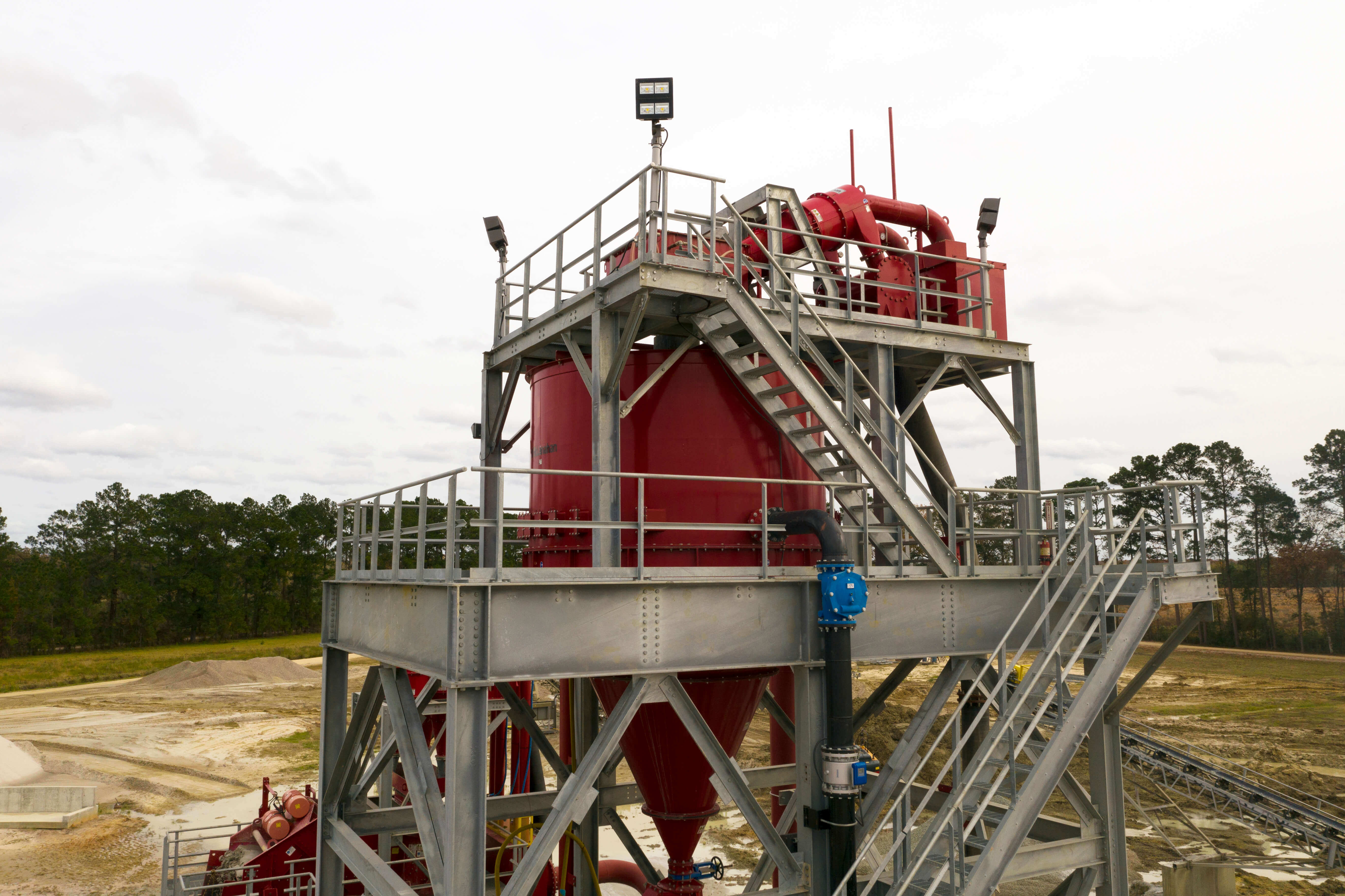"Hydrocyclones, or more simply Cyclones, have existed in various forms since the late 1800s. They started off as air separation equipment, and since then they’ve been used in lots of different applications, specifically the minerals industry for classification, desliming and dewatering."
How do Separators™ differ from Hydrocyclones?
"Interesting question. It’s one of the difficult things to describe. All Separators™ are Cyclones, so they’re based on the same piece of equipment. Separators™ are simply modified Hydrocyclones, which, in our designs, are used to separate solids from liquid."
"Back in the 1970s, a patent was issued for an Automatic Discharge Regulator designed to improve the underflow density over a wide variety of feed conditions. These Hydrocyclones were named Separators™ in North America. This feature is significant when associated with processes where downstream density is critical, such as feeding Attrition Cells or stockpiling sands."
What are Hydrocyclones used for?
"Cyclones are used for classification, desliming (which is getting rid of clays prior to a process) and densification — so there are a lot of applications for Cyclones, including fines recovery. Examples of common applications include classification in ball mill circuits and concentrating Hydrosizer® feed."

McLanahan Hydrocyclones feeding a Hydrosizer®.
What are Separators™ used for?
"Separators™ are used, generally speaking, when the downstream process is moisture sensitive, so you want to maintain a specific density, such as an attrition circuit where it’s very important to maintain 72-75% solids by weight and where you’ve got a feed that could vary.
"Where you want to stockpile a material, a Separator™ is best because of the underflow moisture content. If solids reduce in the feed, Hydrocyclones can flush and will wash the stockpile away, whereas a Separator™ maintains the same density under these conditions, so you maintain the stockpile."
Separators™ maintain underflow density under varying feed conditions, which allows them to stockpile material directly.
How do Hydrocyclones work?
"Hydrocyclones have no moving parts; typically, a pump feeds slurry to the Hydrocyclone at a designated pressure and volume. Simplistically, the inlet geometry of the Cyclone induces an internal rotational motion creating centrifugal force. This force sends coarser fractions to the outer wall, leaving finer fractions toward the inner core, which spiral upward out through the Vortex Finder. The coarser fractions spiral downward toward the apex, concentrating into a more dense slurry before finally discharging from the bottom apex.
"Separators™ work in a similar manner, only they feature a flexible underflow regulator fixed to the apex (or spigot) and a specially designed overflow pipe fitted to the overflow flange. The overflow pipe creates a siphon, controlled by an air valve, to regulate the flow of the material exiting the Cyclone apex. This siphon effectively eliminates the discharge of water when zero solids are present in the feed."

How a Hydrocyclone works.
Why does McLanahan offer both Hydrocyclones and Separators™?
"To cover many different types of applications. You can deslime with both a Hydrocyclone and a Separator™, but then it depends on what your downstream process is going to be. It may be very suitable to use a Cyclone in the application, but if you want a drier, more continuous product discharge, then you would use a Separator™.
"The one thing about the minerals industry in comparison with the aggregates market is that aggregate applications tend to be more variable. Whereas minerals applications process a continuous feed rate through a plant all day every day, a sand plant may have variations in feed quantity and type because of different parts of the deposit it is processing, so you need to be able to cover all those types of applications."
What are the benefits of Hydrocyclones in fines recovery systems?
"In fines recovery systems, what we’re looking at, generally speaking, is the waste product from a plant. You have an effluent stream that’s going out to a settling pond, but you don’t always want to just throw everything out there because there may be recoverable useful material in the stream. You could put that recovered material on a stockpile and use it for rehabilitation or sell it perhaps, and you’re not using pond space.
"If you have an operation that operates for 4,000 hours a year and you recover just an additional 5 tons an hour, that’s 20,000 tons over a year that can either be sold or at least given away, and it’s not in your pond."

McLanahan's Ultra Fines Recovery systems allow producers to recover potentially salable material from the waste stream to reduce settling pond size.
How many tons of material have McLanahan Hydrocyclones/Separators™ processed over the years?
"In the last 20 years, our Separators™, Hydrocyclones and systems have processed millions of tons of materials in all sorts of applications."
What are the advantages of working with McLanahan and its Hydrocyclone/Separator™ technology?
"That’s a pretty easy question to answer. We’ve got people who’ve dealt with this equipment from graduate and post graduate work to metallurgists working in a facility operating the equipment. It’s the expertise that McLanahan has; there’s a couple hundred years of individual experience behind us in Hydrocyclones and Separators™."








